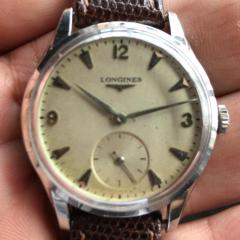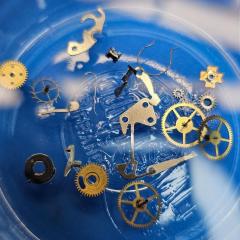Brocok movement escapement
-
Recently Browsing
- No registered users viewing this page.
-
Topics
-
Posts
-
By RichardHarris123 · Posted
Cheeky bugger, I fixed it myself, very difficult. Put lighting module back, push the back on. Took all night -
Hi all! I just bought this Rolex (no automatic works). I took it apart and cleaned all its parts. This movement came with no pallet fork. I am more interested in assessing the general state of the caliber, which is, in my opinion, great, except for the balance complete. This watch came with a shock protection that is new for me. My concerns, just if you can give your opinions, are: 1. Are the pivots worn? The balance spins freely when I loosen the cock screw, but I think the lower one can be worn. 2. Can the internal rubies of the shock protections be removed for cleaning purposes? 3. Do you think that there is a small bend in the overcoil? General comment: The caliber is easy to service. The problems come if you need to source parts (a pain in the back and extremely expensive); the balance coil is blue, which is more delicate and prone to be bent. Thanks for your time...
-
I presume a pivot is broken off the spare balance, in which case restaffing it is easier than hairspring swap. Just give the spare movement a 40hrs bath in Coca-Cola, for successful disassembly. Regs
-
By watchhammer · Posted
https://ebay.us/m/Oc7RUU This could come in handy https://ebay.us/m/STf5rc
-







Recommended Posts
Join the conversation
You can post now and register later. If you have an account, sign in now to post with your account.
Note: Your post will require moderator approval before it will be visible.